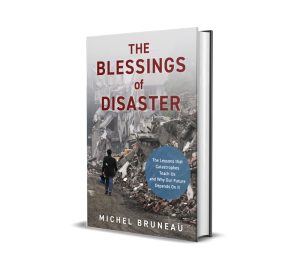Building “Bridges” to a More Resilient Society
Are clients (and the general population) aware of how the infrastructure behaves when subjected to extreme events, the risks, and the consequences – and, more importantly, if they are, do they care? One can answer these questions with a categorically confident: “It depends!”
Much is said and written nowadays about the need for resilience. If a societal goal is to achieve resilient cities – or a resilient world – everybody should be aware of the complex factors that make it difficult for society to prepare against disasters. And they should consider the patterns of human nature and technology that could ensure that these disasters will – or will not – repeat themselves. But, unfortunately, we are far from there yet.
A case in point is the 2011 Christchurch (New Zealand) earthquake. More than a thousand buildings in Christchurch’s Central Business District (CBD) suffered moderate damage during this earthquake. To structural engineers, these buildings performed as intended because the seismic design provisions in building codes aim to provide life safety by preventing collapse, not protecting the assets. However, the public was shocked to learn this, particularly as it watched more than a thousand buildings being demolished after the earthquake because their non-fatal structural damage was deemed prohibitively expensive to repair (or less desirable than rebuilding with insurance money). It temporarily turned the CBD into a ghost town, and reconstruction is still underway 11 years later.
Similarly and anecdotally, following Hurricane Ian, I posted an article on LinkedIn with a picture showing the devastation in Fort Myers Beach. In that photo, most oceanfront houses had been flattened by the wind and storm surge, except one that stood up defiantly with non-fatal damage (much like the one that survived Hurricane Michael, as documented in STRUCTURE’s March 2019 issue). Doing a bit of data-digging with Google Earth, Street View, real estate websites, and tax assessors’ records, it was possible to determine that this house had been constructed in 2022. In contrast, the other homes surrounding it had been constructed from the 1920s to the 1990s (information I provided in a second post). In a week, the two posts were viewed by more than a million people, received 4,000 reactions, and generated more than 500 comments. In these comments, the engineers and home builders highlighted this as proof of effective progress in Florida’s Building Code (and its enforcement) that today requires a highly-elevated first floor, roof tie-downs, hurricane wind-resistant windows, etc. On the other hand, many non-engineers attributed it to sheer luck, the whims of mother nature, or divine intervention. A significant disconnect, to say the least.
A more knowledgeable public is a more resilient public, and this is where The Blessings of Disaster goes to work. The book targets the general public, although engineers can enjoy reading it too. It tells the real story of our relationship with disasters and how it could provide insights into our future as a civilization. It also aims to make everybody aware of all the traits of human nature and technological factors that challenge us when it comes to preventing (or not) disasters, which is a critical first step – a necessary condition. What must be done after that to solve the problems becomes complicated – and this is where engineers can use the book for leverage.
In creating safe and resilient infrastructure, all structural engineers are in the business of saving lives (“holding paramount the health, safety, and welfare of the public”). This is critically important because deaths occur when the infrastructure intended to protect us from the environment collapses during fault ruptures, stormy winds, water surges, technological failures, and terrorist attacks. Many engineers are part of the army of silent heroes who work tirelessly behind the scenes to promote the development and adoption of enhanced codes and specifications to prevent or minimize the destruction caused by these extreme events – efforts often met with strong opposition (sometimes by engineers too). These silent heroes progressively create a world that is more resilient to disasters, moving the needle to some degree, one nudge at a time.
However, for all hazards, nothing is as effective as a disaster. It not only moves the needle but also puts jet engines on it! Everybody cares about the issues for a short period after a disaster. One excellent option is to wait for a disaster to take advantage of this suddenly opened window of opportunity (and act fast because that window usually closes quickly).
Another (less painful) option is to use the book as a useful bridge to initiate discussions with clients on the exposure of infrastructure to disasters and the range of possible solutions. An engineer told me that The Blessings of Disaster is “not only a book that engineers enjoy reading, it is also a book that engineering firms might consider giving to all their clients.” Structural engineers are always ready to build new bridges – particularly if they lead to a more resilient society. As such, this may be one more tool worth adding to the engineer’s toolbox.■

